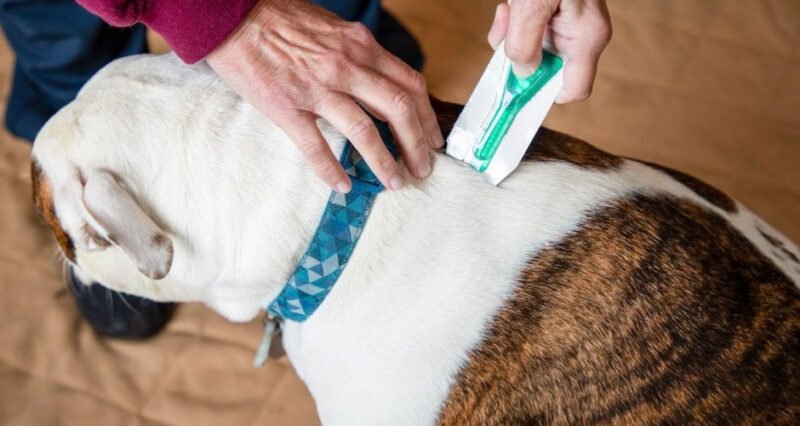
Every pet owner’s worst fear is losing their beloved companion. The uncertainty and helplessness can be overwhelming. Thankfully, technology offers a glimmer of hope in such scenarios, with pet microchip scanners playing a crucial role. These devices, though small and unassuming, are powerful tools in safeguarding our furry friends.
But how exactly do they work, and what makes them so essential in ensuring pet safety?
The Basics of Pet Microchipping and Scanning
First, let’s delve into what a pet microchip is. This tiny device, about the size of a grain of rice, is implanted under a pet’s skin and contains a unique identification number. When a scanner passes over the microchip, it emits a low-frequency radio wave that activates the chip, transmitting the ID number back to the scanner. This number is the key to accessing the pet’s registered information in a database, including the owner’s contact details.
Microchip scanners are the unsung heroes in this process. Without them, the information stored in the microchip would be inaccessible, rendering the microchip useless. These scanners come in various forms, from handheld devices used by veterinarians and animal shelters to fixed scanners in public places like airports and animal control agencies.
The Evolution of Pet Microchip Scanners
Over the years, pet microchip scanners have evolved significantly. Earlier models were limited by compatibility issues, as they could only read microchips of the same brand or frequency. Today, universal scanners have largely replaced these models. These advanced devices can read multiple frequencies, making them compatible with a wide range of microchips. This universality is vital, considering the global nature of pet ownership and travel.
The Vital Role of Scanners in Reuniting Lost Pets
Consider the all-too-common scenario of a lost pet. Without a microchip scanner, the chances of reunification rely on physical identifiers like tags or distinctive features. However, tags can fall off, and physical descriptions can match numerous lost pets. Microchip scanners provide a definitive way of identifying a lost pet, significantly increasing the chances of a happy reunion.
Animal shelters and veterinarians are often the first to use these scanners on found pets. The quick scan can instantly reveal the pet’s identity, turning a potentially long and uncertain process into a swift resolution. It’s not just about convenience; it’s about making every second count in the crucial hours after a pet goes missing.
The Impact of Microchip Scanners on Animal Welfare and Control
Beyond individual pet safety, microchip scanners have a broader impact on animal welfare and control. Stray and lost pets can quickly overwhelm animal shelters. By swiftly identifying and returning microchipped pets to their owners, shelters can focus resources on truly homeless animals.
Moreover, in the case of natural disasters or emergencies, microchip scanners become indispensable tools. They facilitate the quick identification and return of displaced pets, reducing the burden on emergency shelters and easing the emotional toll on affected families.
Bridging the Gap: The Integration of Scanner Technology in Public Spaces
The integration of microchip scanner technology in public spaces marks a significant step forward in pet safety. Imagine parks, train stations, and community centres equipped with scanners. Such advancements not only streamline the process of finding lost pets but also serve as a deterrent to pet theft, a rising concern in many communities. With scanners more accessible, the chances of reuniting lost pets with their owners increase exponentially.
Training and Awareness: Key to Maximising Scanner Efficacy
The effectiveness of microchip scanners hinges on proper training and public awareness. It’s one thing to have the technology; it’s another to use it effectively. Training for animal control officers, shelter staff, and veterinarians is crucial. They need to know not just how to use the scanners, but also how to interpret the results and take appropriate action.
Public awareness campaigns play a vital role too. Pet owners should know the importance of microchipping their pets and keeping their contact information up to date. They should also be aware of the role and availability of scanners in their community. This dual approach of technology and education forms a robust safety net for our pets.
The Future of Pet Microchip Scanners: Innovations on the Horizon
The future of pet microchip scanners is bright with potential innovations. Imagine a world where scanners are linked to a global database, instantly updating a pet’s location when scanned. Or consider the possibility of integrating scanner technology into smartphones, making it accessible to every pet owner. These advancements could revolutionise the way we keep track of and protect our pets.
Challenges and Considerations in Scanner Implementation
Despite their benefits, the implementation of microchip scanners comes with challenges. The cost of universal scanners can be a hurdle for small shelters or veterinary practices. Additionally, the diversity of microchip frequencies and standards globally can complicate the process. There’s a need for more streamlined, standardised technology to overcome these barriers.
The Role of Community and Government in Supporting Scanner Use
Community and government support can significantly impact the widespread adoption of microchip scanners. Funding for animal shelters and veterinary clinics to acquire these scanners is one aspect. Another is legislative measures mandating the use of microchips and scanners for pets, similar to the laws in some European countries. Such support not only promotes pet safety but also reflects a community’s commitment to animal welfare.
Conclusion
Microchip scanners are more than just tools; they are lifelines that reconnect lost pets with their families. As technology advances and awareness grows, their role in ensuring pet safety becomes increasingly significant. It’s a collective effort involving pet owners, communities, and technology innovators. By embracing these advancements and fostering a culture of responsible pet ownership, we can create a safer world for our beloved animal companions. Let’s commit to this vision, where every lost pet has a high chance of being found, thanks to the simple, yet profound technology of pet microchip scanners.

